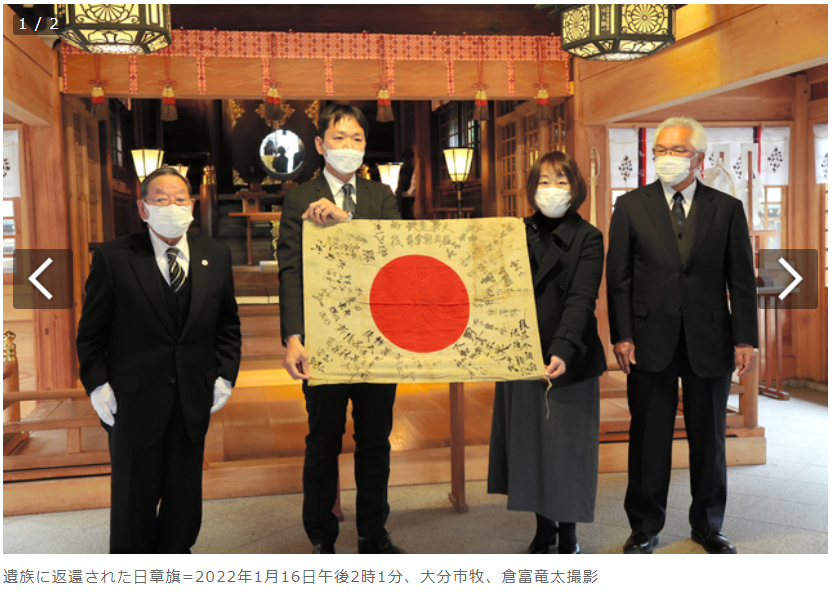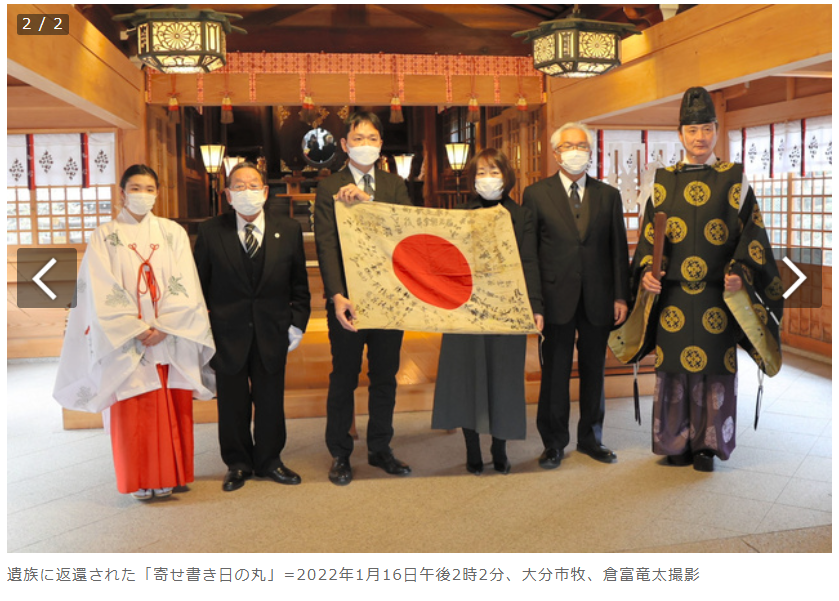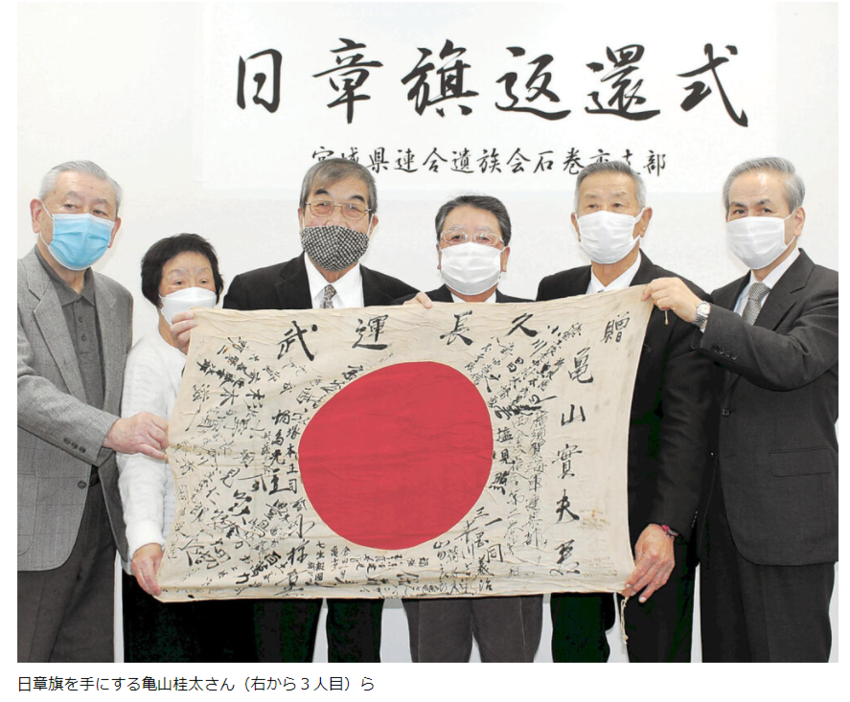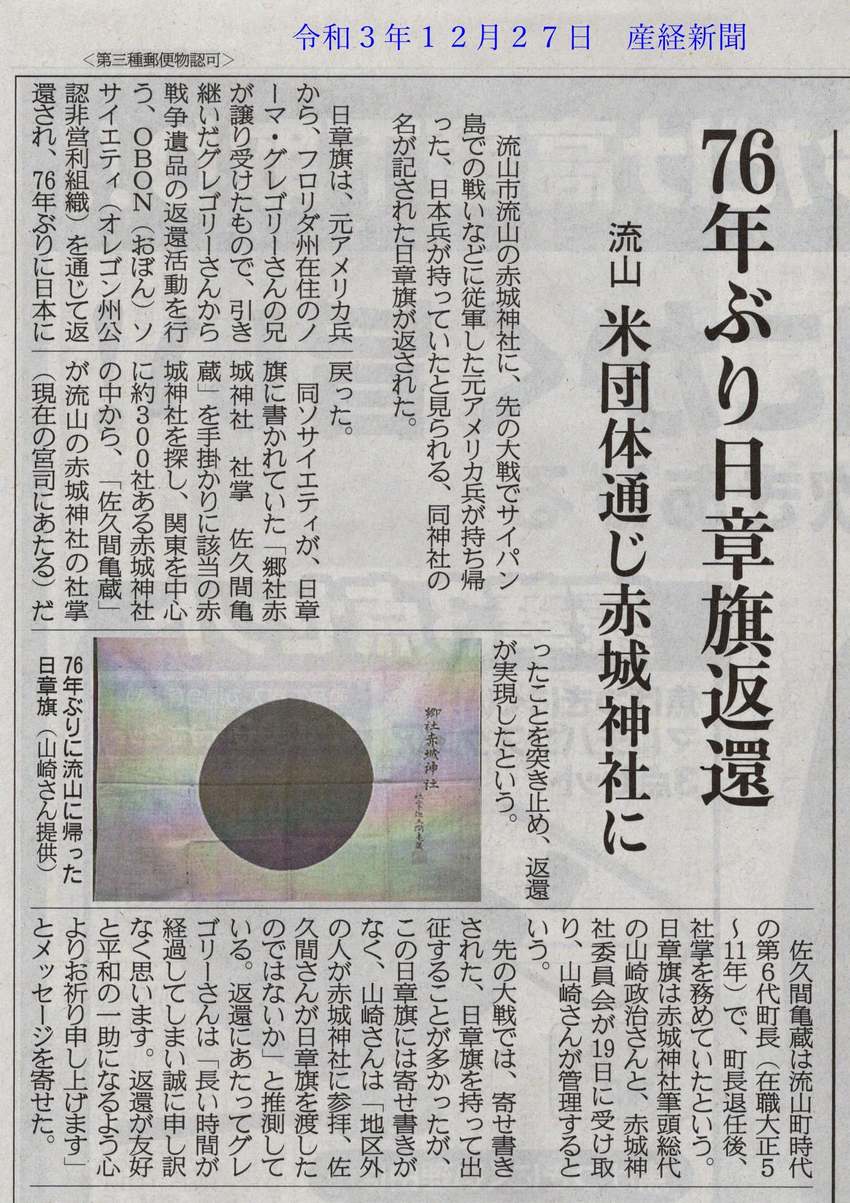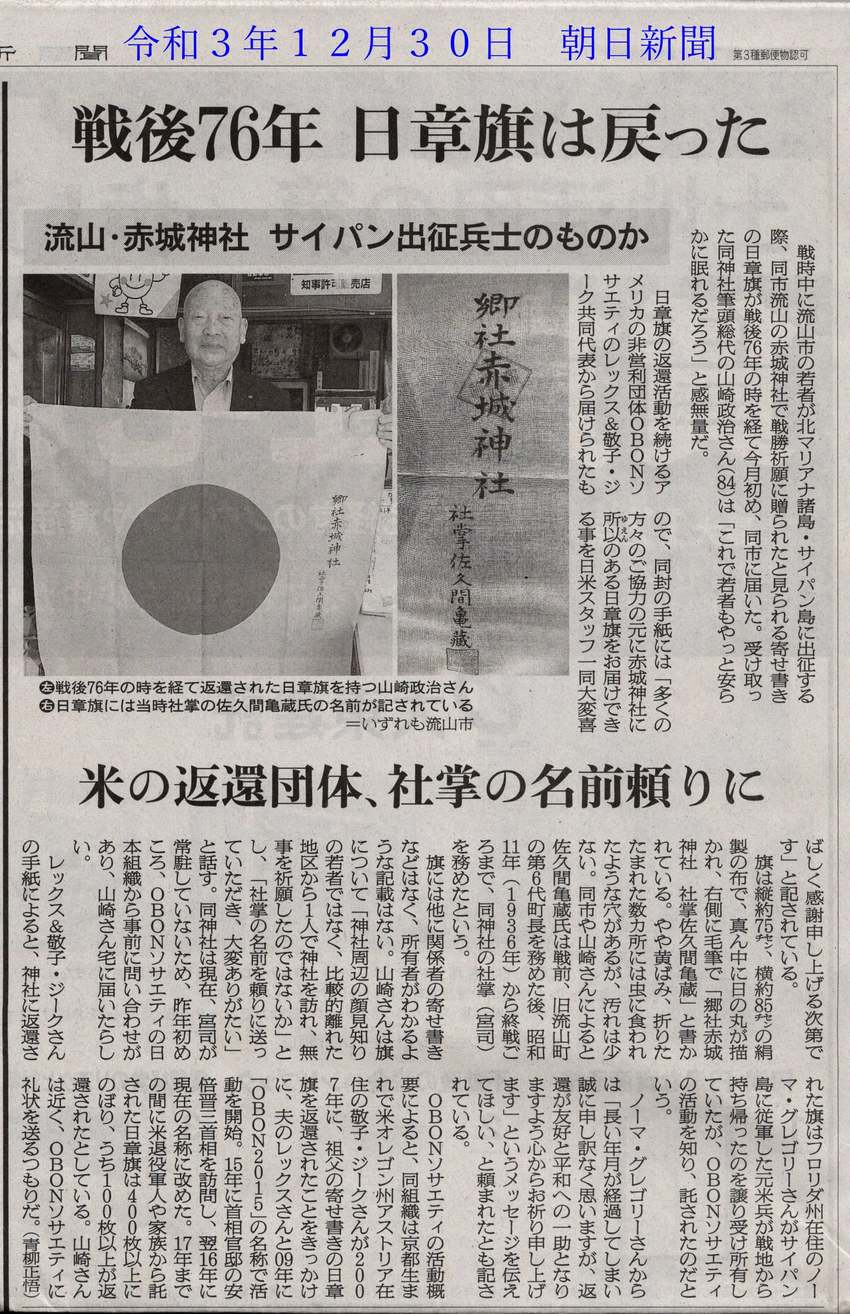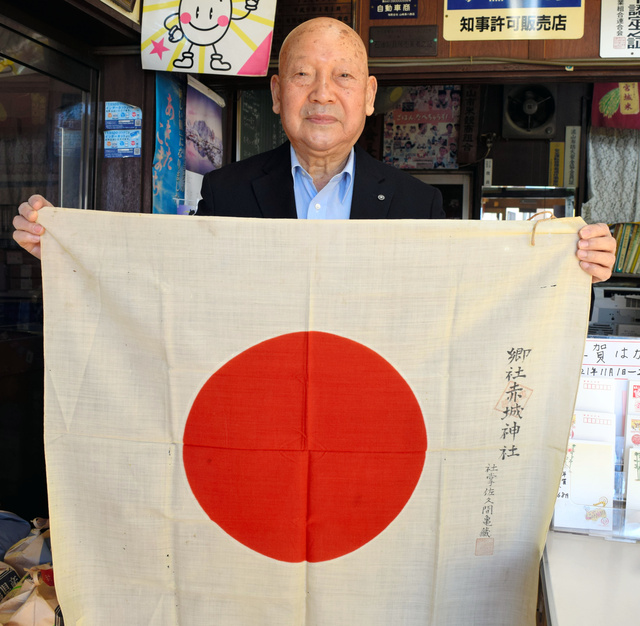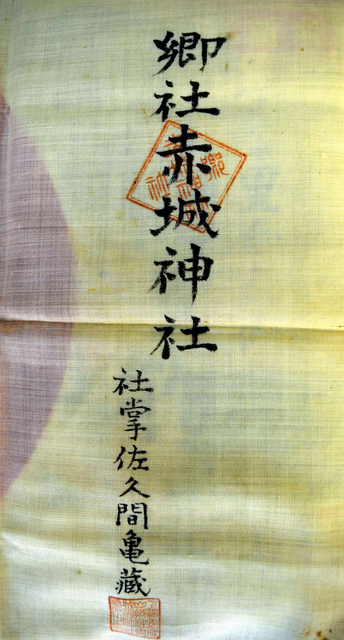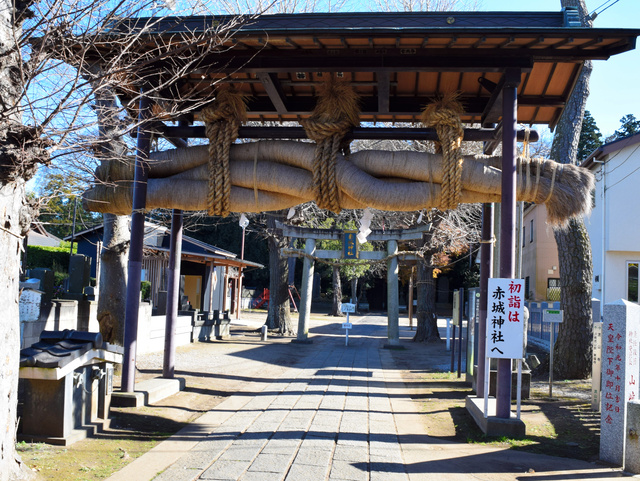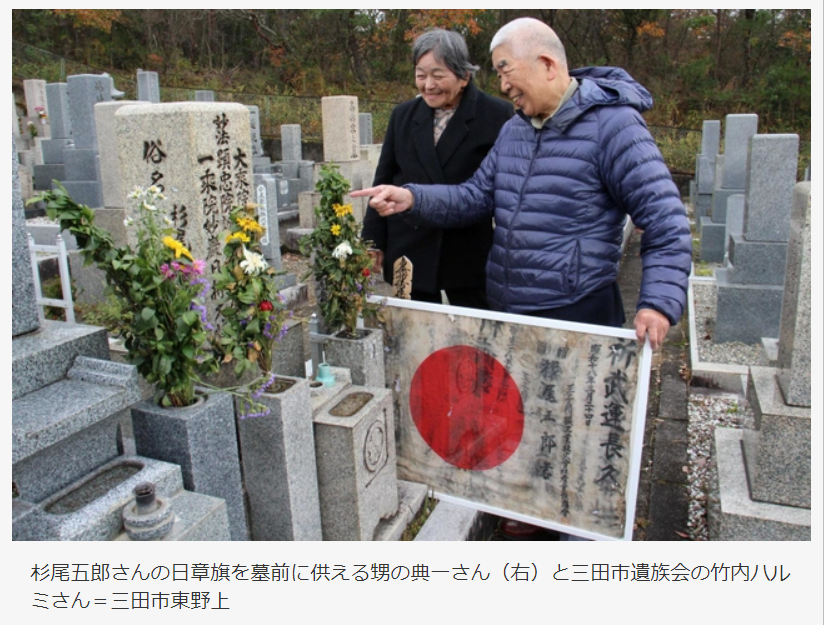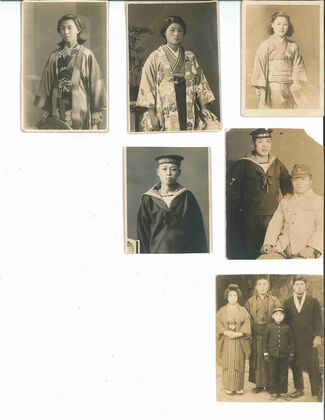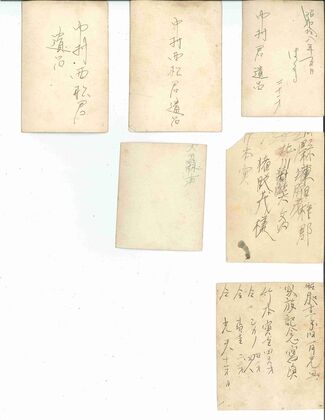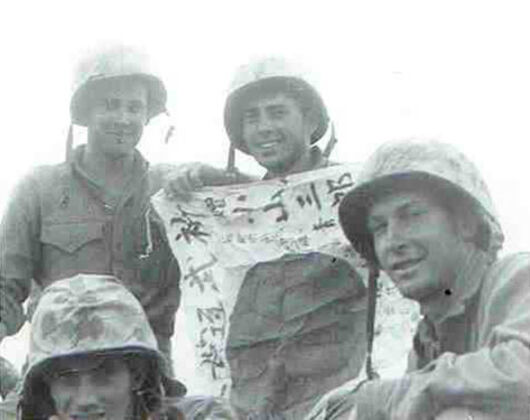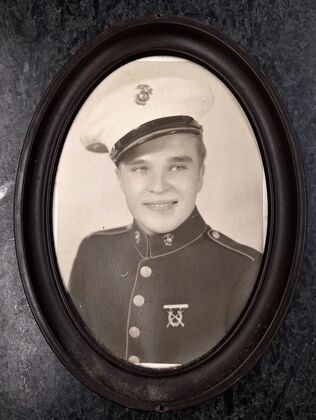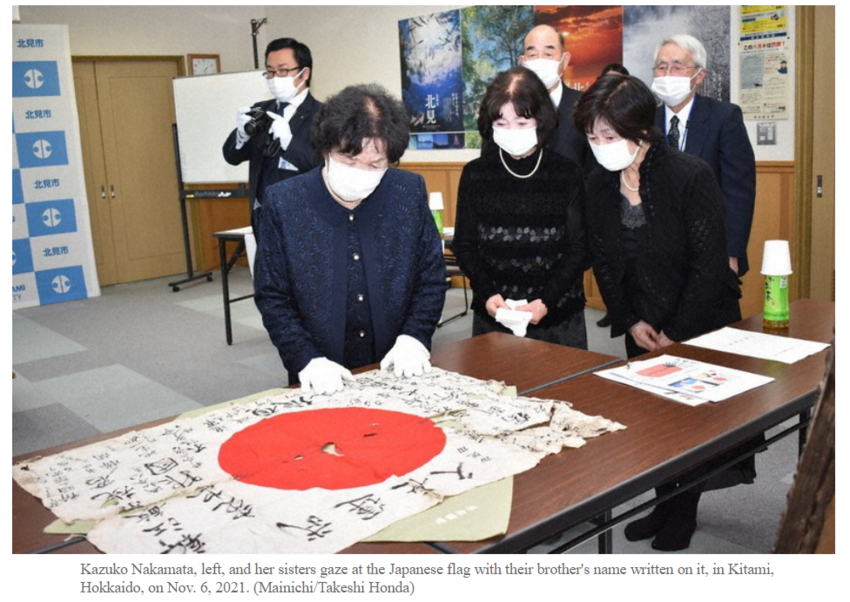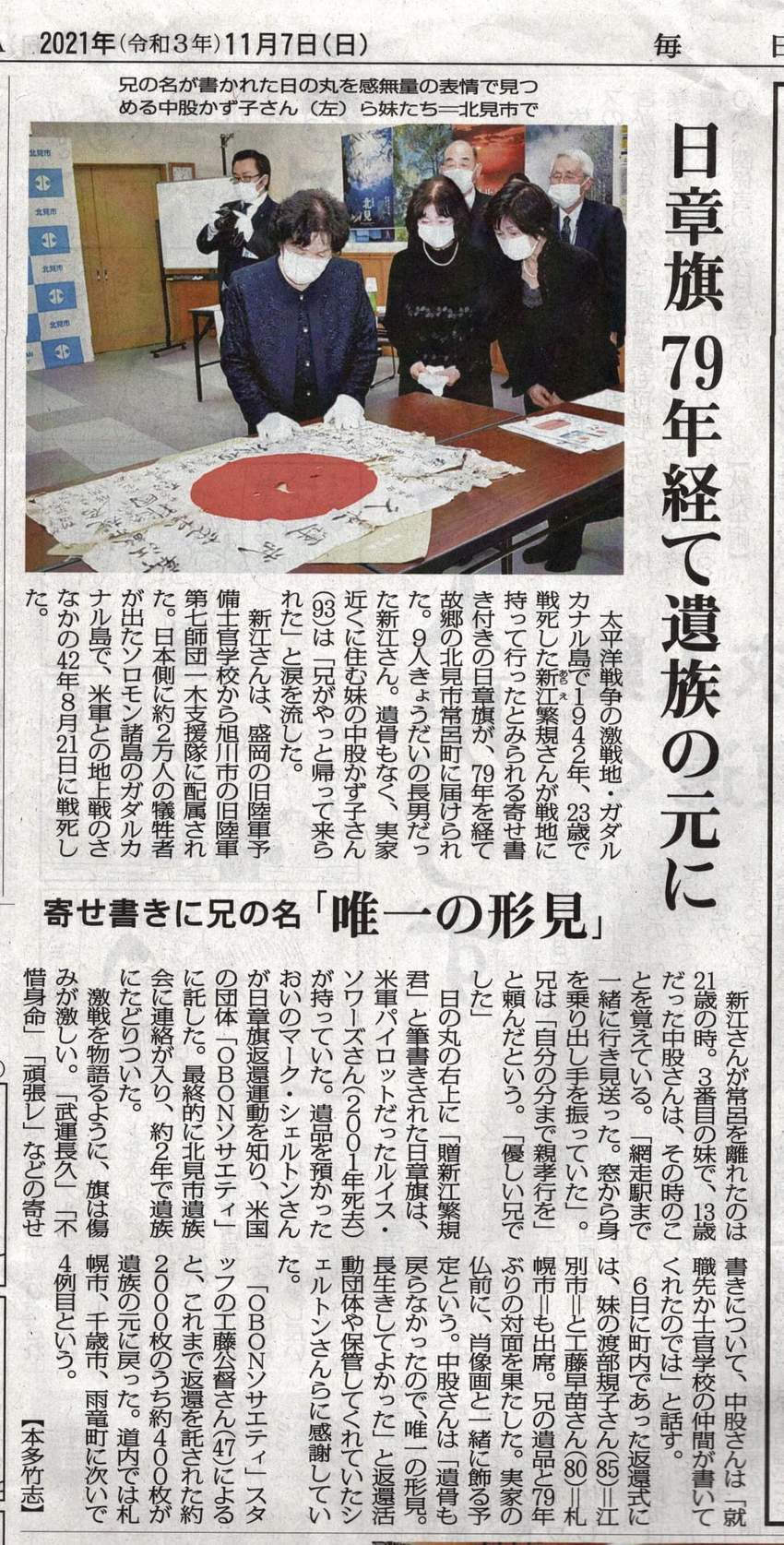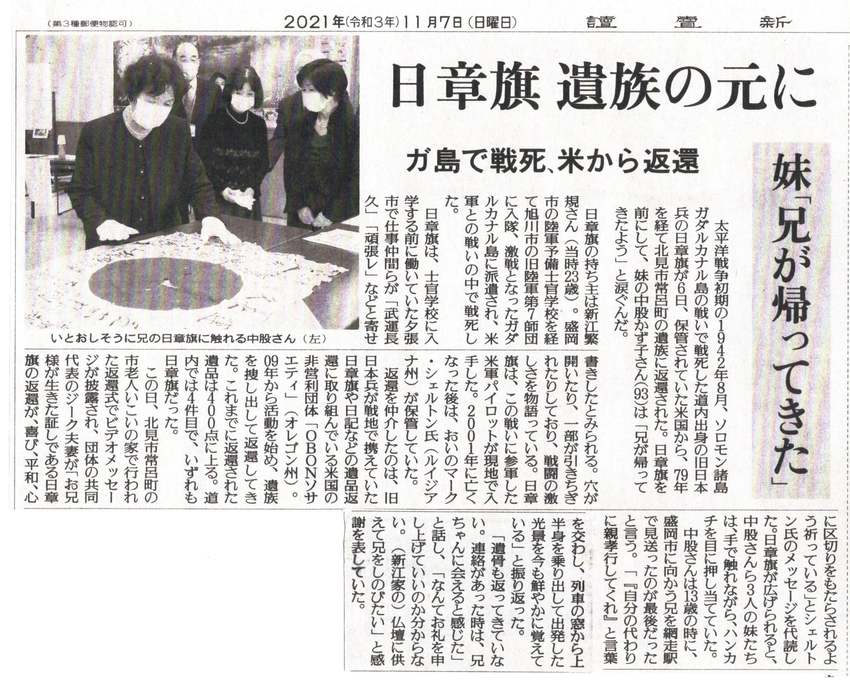沖縄で戦死した祖父の寄せ書き日章旗 遺族のもとへ
第2次大戦中に沖縄本島で戦死した大分県藤原村(現日出町)出身の元日本兵後藤今朝治さんの遺品の日章旗が、遺族のもとに戻ってきた。米兵が米国に持ち帰っていたが、民間団体の仲介で戦後76年たって返ってきた。
孫の辰徳(よしのり)さん(45)=大分市松が丘=によると、今朝治さんは、辰徳さんの父である生後間もない長男を残し、1945年7月1日に沖縄本島で、30代前半で戦死したという。そのため、祖父がどのような人物だったかは、父親から聞かされることもなかった。
日章旗は、今朝治さんが出征する際に家族や身近な人が寄せ書きなどを添えて贈ったものとみられ、祖父や祖母の名前と、生後間もない辰徳さんの父の名前も記されていた。「大和魂」「男子乃本懐」のメッセージと一緒に、多くの人の名前もあった。
日章旗は、米カリフォルニア州のリンダ・ハーンさんが、米兵だった父の遺品として所有していた。戦時中の遺品を遺族のもとに戻す活動をしている米国の「OBONソサエティ」から日本遺族会を通じて調査依頼があり、大分県遺族会連合会や藤原遺族会の協力を得て持ち主が分かった。
16日、大分市の県護国神社であった返還式には、辰徳さんと妻美穂さん(47)が出席。県遺族会連合会の末光秀夫会長が「日章旗は、最期まで肌身につけていた戦没者の魂。家族に会いたいという思いで、返ってきたと思う」と語った。
返還式では、日章旗を保管していたハーンさんのメッセージも披露された。ハーンさんは「この旗があなた方を少しでもお慰めできますよう望んでいる。旗があなた方のもとへ帰っていくことは、私への慰めにもなります」とつづった。
辰徳さんは「きっとこの日章旗は祖父が最期まで、離さず持っていたのでしょう。これを見ると、戦争の悲惨さや平和の大切さを改めて強く思います」と語った。 https://www.asahi.com/articles/ASQ1K725LQ1JTPJB002.html?fbclid=IwAR0zCzJRxn5yZ9xgdisoqCdRnFORimsjNZu_CNEJCPCM01T6NlT1oE_o40g
父の日章旗、息子に返還 石巻の亀山さん
2022年01月07日 10:48
太平洋戦争の激戦地、ガダルカナル島に軍属として参戦した旧稲井村井内の亀山實夫(みつお)さんの日章旗が昨年12月21日、長男の桂太さん(69)=石巻市のぞみ野1丁目=に返還された。亀山さんはガ島でマラリアにかかり日本に帰還、戦死を免れた。桂太さんは「父が生きて帰れたのは日章旗のおかげ」と話した。
日章旗の返還は日本遺族会などを通じて実現した。ガダルカナル島などの戦闘に参戦した元米海兵隊員が持ち帰り、戦没者の遺留品の返品を進める米国のNPO「OBONソサエティ」が保管していた。
石巻市社会福祉協議会であった返還式で、県連合遺族会石巻市支部の鈴木喜美男支部長が「戦争の悲惨さ、平和の尊さを次の世代に語り継いでほしい」とあいさつし、日章旗(横100センチ、縦70センチ)を桂太さんに手渡した。
亀山さんは高校を卒業後、都内の石材問屋に就職。軍属として出征し兵舎の建設に携わったという。出征前に書かれた日章旗には、無事を祈る「武運長久」や、「祈る健闘」などの寄せ書きがある。
マラリアにかかりガ島から生きて日本に戻った亀山さんは戦後、戦争のことはほとんど話をしなかったという。1974年に病気で50歳で亡くなった。
日米開戦から80年の年に父親の日章旗が戻ってきた奇跡に驚く桂太さん。「戦争は駄目。何もいいことがない。これを機会に子ども、孫たちに平和の尊さを語り継いでいきたい」と語った。https://kahoku.news/articles/20220107khn000020.html
【千葉県】昨年の10月に千葉県流山市赤城神社に返還されました日章旗が同年末に神社氏子衆や参拝者に公開されました。県内3新聞社「読売・産経・朝日新聞社」と市の広報誌が取り上げて下さいました。
![【瓊林会】は、長崎高商、長崎経...]() 【瓊林会】は、長崎高商、長崎経専、長崎大学経済学部の卒業生を会員とする同窓会を基盤とし、公益事業活動を行う組織です。110有余年の歴史と1万6千名余の会員を擁し、全国25箇所の支部を設け、会員相互の親睦をはかるとともに母校発展のために事業を行う。
【瓊林会】は、長崎高商、長崎経専、長崎大学経済学部の卒業生を会員とする同窓会を基盤とし、公益事業活動を行う組織です。110有余年の歴史と1万6千名余の会員を擁し、全国25箇所の支部を設け、会員相互の親睦をはかるとともに母校発展のために事業を行う。
11月5日に長崎県護国神社にて執り行われました日章旗返還式について、兵士と同じ学校の出身であるOBONソサエティ捜索班の山本の手記が同校同窓会誌【瓊林(けいりん)】に掲載されました。
![These photographs are part of...]() These photographs are part of a collection long held by World War II veteran Wiekko Seppo, a Marine from Duluth who fought in the Pacific Theater in 1944 and 1945.
These photographs are part of a collection long held by World War II veteran Wiekko Seppo, a Marine from Duluth who fought in the Pacific Theater in 1944 and 1945.
![Part of the challenge in the ph...]() Part of the challenge in the photo mystery is deciphering the Japanese writing on the back of the photos.
Part of the challenge in the photo mystery is deciphering the Japanese writing on the back of the photos.
![Dick Jessor turned 97 this we...]() Dick Jessor turned 97 this week and is a veteran of World War II who fought at Iwo Jima, in the 25th Marine Regiment. Weikko Seppo served in the 24th.
Dick Jessor turned 97 this week and is a veteran of World War II who fought at Iwo Jima, in the 25th Marine Regiment. Weikko Seppo served in the 24th.
![Jessor said taking photos off ...]() Jessor said taking photos off dead enemy soldiers wasn't common, unlike collecting flags the Japanese wore signed by family members wishing them good luck on the battlefield.
Jessor said taking photos off dead enemy soldiers wasn't common, unlike collecting flags the Japanese wore signed by family members wishing them good luck on the battlefield.
![【Pine Knot News...]()
![Dick Jessor]() Dick Jessor
Dick Jessor
The sepia-toned photographs, slightly larger than a business card, tumble out of a browning, mottled envelope. For what is known of the six photos, and also what is enticingly unknown, the sight of them is breathtaking.
Keiko Satomi punctuates the moment.
"It's just," she pauses. "It has a weight."
From what can be pieced together across nearly eight decades, the photographs were found on the bodies of dead Japanese soldiers during a Pacific Theater battle in World War II. There are pictures of three women in formal dress. Sisters? A mother? A girlfriend? There is a family photo. Two pictures of soldiers. There is some identifying writing on the back of them, in columns of scribbled Japanese forms.
Keiko Satomi has been charged with finding more about the photos, and to perhaps get them back to families in Japan.
"It's such history," she said from a table in the children's section of the Cloquet Public Library where she works. "These were passed hand to hand with so much emotion. You think of how much they meant" to the soldiers.
We know the hands from which the photos passed since the end of the war in 1945. It was a Finlander from Duluth, to a German-born wife in Cloquet and, now, to a librarian, born in Japan.
The Marine
Weikko Seppo was too short. Five feet and 4 inches tall, he somehow got accepted for the Marine Corps after being drafted into the Army. He left Duluth and trained in California as part of the then novel amphibious Marine divisions created to bolster the U.S. presence in the Pacific.
They were trained for beach landings and fighting the enemy on established enemy turf on remote islands needed for aircraft staging.
Seppo fought on Tinian in August of 1944 and Iwo Jima in February and March of 1945, among others. In those two battles, he was injured, and received a Purple Heart medal and Gold Star.
Seppo died in 2001 at age 77. What is known about the photographs comes from his wife of 26 years, Susanne Stiefel Seppo.
On her mind
Susanne is among thousands of people across the country who have found themselves clearing things from their homes during the pandemic. The photographs have been on her mind for some time, especially since meeting Keiko Satomi as a frequent Cloquet library user. Satomi was born in Japan, and maybe she could find something out about the photographs.
Born in Germany and raised in Duluth, Susanne was a generation younger than Weikko. They married in the mid-1970s. He told tales of the war, and certainly had nightmares, but she never could piece it all together. She said he suffered from Alzheimer's disease in his 50s, likely the result of his war injuries. Before he died, he had been in a care facility for some time.
"I didn't want to do anything (with Weikko's war relics) while he was living," Susanne said. "The pictures have been in a box for years. I thought it was time to find them a home, and I thought of Keiko."
Resources
Keiko Satomi is using family and friends in Japan to try to piece together information on the six photographs. She put the images on Facebook and asked for help in deciphering the writing. She saw that one picture showed a military member wearing a hat saying "Sasebo Navy" on it. Sasebo was a large seaport in western Japan in the Nagasaki Prefecture. It was an important base for the Japanese and was on a list of 17 sites designated by the U.S. for an atomic bomb drop.
Satomi heard back from people at City Hall in Sasebo. They identified the name and address of the man in the photo and confirmed that he was a casualty. They are looking for any possible family members.
Satomi also contacted the Obon Society in Oregon, which helps Americans in returning war relics to Japan. Its director said she would take on the photograph project. Most commonly, Obon deals with the "good luck" flags the Japanese wore before going off to service. They are deeply personal objects, signed by family and friends with messages. They became common bounty for American soldiers.
Survivor
Dick Jessor was the same age as Weiko Seppo when he fought in a neighboring division of the Marines at Iwo Jima. He was planning on celebrating his 97th birthday on Wednesday. The Pine Knot News came across his name on a search for Iwo Jima veterans because he was in the news the past year, retiring from the University of Colorado Boulder as the longest-serving professor in the school's history: 70 years. He taught behavioral sciences and psychology.
Jessor said it was unusual for photographs to be taken from enemy soldiers. He recalled coming across a body outside his foxhole one morning and looking for one of those flags. He ended up finding letters on the soldier. The inhumanity of war hit home as he saw a commonality with his enemy.
"I didn't touch those," he said of the letters. "It was an epiphany. I had letters from home in my pocket. It really gave a whole sense of how crazy it was."
He said the fighting on Iwo Jima was so fierce, with the enemy hidden in bunkers underground, that it drove men to extremes when it came to how they reacted when coming across a Japanese body. Unspeakable things, Jessor said. "The anger and hostility just came out after being continually shot at by people you couldn't see. Being assaulted by an unseen enemy."
There were an estimated 20,000 Japanese on Iwo Jima when the Marines landed in February of 1945. Most of them died there. More than 7,000 U.S. soldiers died as well.
Jessor eventually did handle one of those Japanese flags. He has a hand grenade from the island sitting on his desk at home.
He said he couldn't say what may have been in Weikko Seppo's mind when he obtained the photographs. It remains a question if he got them from Iwo Jima or someplace else. "You do get a sense of how much the enemy is just like you," Jessor said. "Pawns in a battle. The sense throughout became an abstraction."
Seppo was a sharpshooter and "he killed a lot of Japanese," Susanne said. Perhaps he found in the photographs a moment to reflect.
Passing down
Satomi has studied the writing on the photographs and believes some of them may have been collected by a Japanese soldier before coming to Seppo. Some have two sets of handwriting on them, the original information a soldier may have written on them and then a different hand perhaps noting when the pictures were obtained from a dead soldier.
It could be that Seppo got the photos from one man who had been collecting the momentos in hopes of surviving and returning them to families.
"I hope I can find them a home," Satomi said.
She had a grandfather from Japan who survived the war after being captured by Russians and spending four years in Siberia.
Susanne Seppo said she's glad she has Satomi working on the mystery of the photographs. It really is a twist of fates: a native German finding a native of Japan to work out a Pacific island mystery sparked by a Finn nearly 80 years ago.
Susanne will take it. "What are my choices? Throw them out?"
If they find a home with family members in Japan, that will be more than she could imagine, she said. "It will have some meaning to them."
********
If you have war relics from Japan
Contributed Photo
OBON SOCIETY, headquartered in Astoria, Oregon, is an international humanitarian organization that manages the largest and most experienced independent network in the world for returning personal heirlooms to families in Japan. With more than a decade of experience, their team of archivists, researchers and scholars receive, search and return personal items that were taken from the battlefields of WWII.
If you are in possession of personal item from WWII you want returned to the brothers, sisters, sons and daughters of missing Japanese soldiers, please do not hesitate to contact OBON SOCIETY.
OBON SOCIETY is a 501(C)(3) non-profit; they do not charge for this service.
The website has complete details at obonsociety.org or you visit their channel on YouTube to see interviews with veterans and their families by searching OBON SOCIETY.
https://www.pineknotnews.com/story/2021/11/26/people/photos-long-tucked-away-create-somber-intrigue/6285.html?fbclid=IwAR1ZtUZlKla4jf2jEsdar4UhVS-YtwAtgtn1WgWZ9oCJuQ5x7lB87n9VGfs

![Japanese Newspaper '' The M...]()
79 years on, WWII Japanese soldier's good-luck flag returns from US to his bereaved family
KITAMI, Hokkaido -- After 79 years, a Japanese flag thought to have been taken to battle by a soldier killed in the Pacific War has finally returned to his hometown, the city of Kitami in Hokkaido. Upon receiving it, his sister said through tears: "My brother has finally managed to come home."
On the flag were messages addressed to Shigenori Arae, who died in 1942 aged 23 on Guadalcanal in the Solomon Islands. Arae was the eldest son of nine siblings. His 93-year-old sister Kazuko Nakamata, who lives near the family home, said that because his remains were never returned, the flag meant her brother could finally come home.
Arae was assigned from the Imperial Army reserve officers' academy in Morioka, Iwate Prefecture, to Colonel Kiyonao Ichiki's detachment of the Imperial Japanese Army's 7th division in the Hokkaido city of Asahikawa. He was killed in combat against U.S. forces on Guadalcanal on Aug. 21, 1942, one of some 20,000 Japanese who died in the battle.
Arae was 21 when he left the Tokoro-cho neighborhood, now part of Kitami. His sister, Nakamata, then 13, recalled the day: "I went with him to Abashiri Station and saw him go. He leaned out the window and waved to me." Her big brother apparently asked her to "be good to our parents for me, too." "He was a kind brother," she said.
The flag, which has the words "presented to Shigenori Arae" written in its upper right corner, was found among the belongings of Louis Sowers, a U.S. military pilot who died in 2001. His nephew Mark Shelton was taking care of it when he learned about the movement to return Japanese flags. Shelton entrusted it to the Obon Society, an American non-profit organization. Eventually, they contacted the bereaved family association in Kitami, who took about two years to reach Arae's family including Nakamata.
The flag is quite damaged, as if telling of a fierce battle.
The inscriptions on it include "Buunchokyu (long-lasting good luck in battle)," "Fushakushinmyo (unsparing devotion to Buddhism)" and "Ganbare (do your best)." "They were probably written by his colleagues at work or at the military academy," Nakamata said.
A handover ceremony in Kitami on Nov. 6 was also attended by Arae's other siblings, Noriko Watanabe, 85, and Sanae Kudo, 80, who both live in Hokkaido. It was the first time the sisters had seen their brother's belongings in 79 years. They plan to display the flag along with his portrait in front of the Buddhist altar at the family home.
Nakamata thanked the involved parties including the Obon Society and Shelton, saying, "His remains were never returned. This is the only memento of him. I'm glad I lived long enough to see it." Obon Society staff member Kosuke Kudo, 47, said about 400 of the around 2,000 flags entrusted to it so far have been returned to bereaved families. This is the fourth case in Hokkaido, following others in Sapporo, Chitose, and Uryu.
https://mainichi.jp/english/articles/20211113/p2a/00m/0na/004000d?fbclid=IwAR3p5yrc_R1mYwPCixB9oPz_SVAe3QSmd_NK4710dj1GQYZZwv-Q8kKJjXA

![オホーツク地区新聞【伝書鳩】/...]()
兄ちゃん、お帰り 2021-11-10 掲載(北見市/社会)
北見市常呂の新江繁規さん遺品
太平洋戦争で旭川の陸軍支隊に所属し、激戦地ガダルカナル島で1942(昭和17)年に戦死した、北見市常呂の新江(あらえ)繁規さんが戦地で持っていた日章旗が6日、同市在住の妹ら遺族のもとに返還された。旧日本兵の遺品返還を進める米国の非営利団体OBON(オボン)ソサエティが日本の遺族会の協力を得て実現。81年を経て故郷に帰ってきた兄の生きた証を握りしめ、妹達は「兄ちゃんに会えた」と涙を流し、受け取った。
約80年経て日章旗が妹らの元へ
激戦地ガダルカナルで戦死
米国OBONソサエティの仲介で返還
当時の常呂村豊浜の新江家に生まれた繁規さんは20歳で徴兵検査に合格し、21歳で旭川の部隊に入営するため、働いていた夕張炭鉱を出征。その際に同僚らが寄せ書きした日章旗と思われる。武運長久、七生報國など気持ちを高ぶらせる言葉が並ぶ。
そのとき13歳だった三女の中股かず子さん(93、北見市常呂)は、いったん故郷・常呂に帰ってからの出征を網走駅まで見送りに行った。五女の渡部規子さん(85、江別市)は6歳で「お風呂に入れてくれたり、いい人でした」、六女の工藤早苗さん(80、札幌市)は「市松人形を買ってくれました」とそれぞれ思い出を語る。
新江さんは旭川で一木支隊に配属。OBONソサエティと日本遺族会常呂支部によると「一木支隊には、この地方からかなり配属になり、熊部隊と呼ばれ強健で、畏れられた」という。42(昭和17)年8月に空港奪還の命令でガダルカナル島に上陸侵攻したが、まちぶせに遭い、先発隊の多数が壊滅した。
元米軍パイロットの米ルイジアナ州に住む親族がテレビで遺品返還の活動を知り2019年に同団体に連絡。札幌在住の同団体日本スタッフ・工藤公督さんが「新江という珍しい名前を頼りに」探し出したそう。道内では4例目の返還となった。親族は米国から遺族宛に「心のくぎりとなりますように」とビデオメッセージを寄せた。
6日、市常呂老人いこいの家に妹ら家族3人が集まり、辻直孝市長を通じて返還された。同遺族会の土本勝昭常呂支部長が「お兄さんが帰って来たね」と声を掛けると、中股さんは涙を旗で隠した。そして「兄の形見であり宝ものです。仏壇に供え、みんなで兄ちゃんをしのびたい」とお礼の言葉を述べた。 https://denshobato.com/BD/N/page.php?id=124771&fbclid=IwAR0VY33UrjaDDMkpQgPdJ5-o-dSw7jb7sWU_iMhwosLJ00CssV_isoSdI6M
毎日新聞・読売新聞・北海道新聞がそれぞれ紙面で北見市常呂町で行われた日章旗返還式について記事を掲載して下さいました。
- ブログルメンバーの方は下記のページからログインをお願いいたします。
ログイン
- まだブログルのメンバーでない方は下記のページから登録をお願いいたします。
新規ユーザー登録へ


